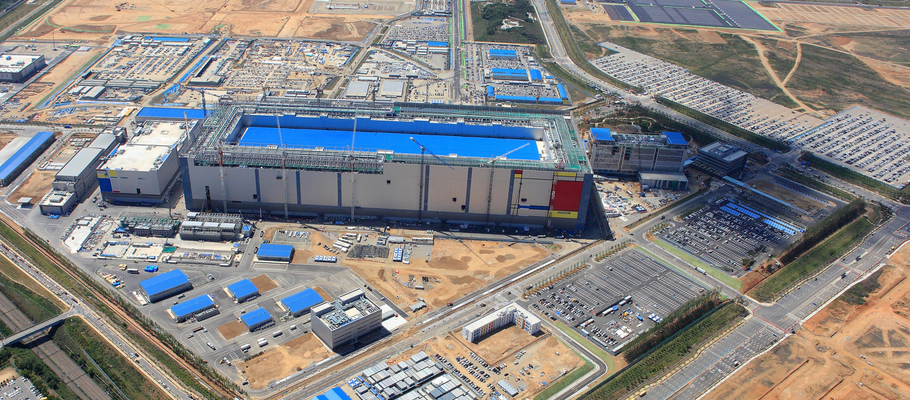Samsung is reportedly close to finishing the development of the industry's first 160-layer or higher NAND flash memory chips. The South Korean semiconductor giant is using its “super-gap” strategy to develop the company's seventh-generation NAND flash memory chips, giving the company an upper hand over its rivals.
The company is using the double-stack technology to create 160 layers or higher in its V-NAND (also known as 3D NAND) flash memory chips. As it is understood, a higher number of layers in a NAND flash chip means higher storage capacity. Earlier, the highest number of layers used in memory chips was 128, and Samsung is now close to the production of 160-layer or higher chips.
Samsung now has an upper hand over its rivals SK Hynix and YMTC
Last year, Samsung and SK Hynix started the mass production of 128-layer 3D NAND flash memory chips. Chinese firm Yangtze Memory Technologies (YMTC) recently announced that it would be producing 128-layer memory chips to compete with Samsung. However, no other firm has announced the development of 160-layer memory chips yet, which makes Samsung the first company in the world.
This achievement is being seen as an important stepping stone for Samsung's memory chip business as it is trying to widen the gap from its rival firms. The South Korean electronics giant earned $16.5 billion from the global NAND flash market in 2020, acquiring a market share of 35.9 percent, which is the highest in the semiconductor industry.
Despite the current COVID-19 situation and hardships faced by the company in the manufacturing of products, Samsung is not backing down on investments in its semiconductor business. After all, its memory chip business is what saved the company from reporting huge profit drops in Q1 2020.

